ISSUE 13: Home
We are proud to bring you this issue of Minerva Rising, in which our writers explore the homefront from many angles. Ginny Short, poet of the eerily staunch and beautiful “The Hawk and the House,” writes,
The landscape of home is capricious, sometimes bright, sometimes murky. Home is where we started, where we are and where we will be. For me, home is the road I am always traveling. I write to create a hot air balloon to lift me to a place where I can see the landscape of road and home, to follow, discover all of its contours, the heartbreakingly beautiful and the stunningly brutal. It’s all home.
Home is a gut reaction; a longing, an escape. Home is mind made of fog and light, feelings woven of gossamer and shrouds. Home resides in the genes that craft our bodies, shines in the light from our eyes. It is a discovery, a journey, a place of becomings, of reckonings, of beginnings. Home colors our skies, crosses our rivers, climbs our mountains. No, you can’t go home again, but you can’t escape it either.
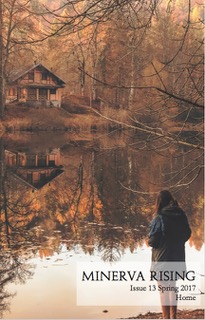
Contributors
We are proud to feature the following amazing contributors in this issue of Minerva Rising. Thank you for being a part of the Minerva community.
Mary Jo Balistreri

At the Window
We built our home as an extension of the land. We lived there for thirty years and together went through many seasons. It was a place of reflection, a kind of retreat, and it mirrored us back to ourselves. We were one of a piece. We have since moved to a condo—we miss the natural setting, and I’m lost without the cherry table, the window. I’d have to say that home is a complete environment for us—not just a building. Without our home, we feel displaced. Home really is where the heart is.
Erica Sofer Bodwell
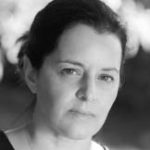
History Lesson I, II, III
Erica Sofer Bodwell is a poet who lives in Concord, New Hampshire. Her poems have appeared or are forthcoming in Crab Fat, White Stag, Entropy/ Enclave, APIARY, The Fem, Coal Hill Review, PANK, HeART, Barnstorm, Hot Metal Bridge, The Tishman Review, and other journals. Her chapbook, 2016 finalist in Minerva Rising’s “Dare to Be” contest, Up Liberty Street, is forthcoming from Finishing Line Press in 2017.
Jessica Brophy
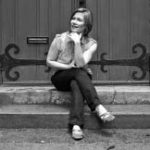
Invocation to Margarets
Jess Brophy is a poet, freelance academic, and a New Jersey native who writes about family quirks, nature’s luster, childhood foods, the body, and spiritual identities. She is a scholar of the sublime, addressing issues within women’s studies and the Black aesthetic of African American female poets. Her poetry has appeared or is forthcoming in Natural Bridge: A Journal of Contemporary Poetry, Alimentum: The Literature of Food, Awakenings Review, and Blue Lyra Review. Her first chapbook of poems, The Paper Girl (Finishing Line Press, 2016), details the coming-of-age story of a daughter growing up in a Christian fundamentalist home who, as a paper girl, is sometimes invited into the private world of her neighbors’ lives where she tries to make sense of what family means. “Invocation to Margarets” is part of a larger poetry project that traces the biological Margarets in her family (who can be traced back to County Tyrone in Ireland) and the spiritual Margarets (the Irish female goddesses from ancient mythology). While Jess is only beginning to understand the ancestors in her present life, and longs for female wisdom to guide her heart, she is not surprised that she comes from a land where poets are revered and women goddesses are poets themselves. Jess blogs about her writing life and offers consultation services to young professional women at www.beautyfullwriting.com.
Jesse Devyn Crowe and Elaine Sorrentino
The Girl Scout and the Hitchiker
Writers Jesse Devyn Crowe and Elaine Sorrentino, cousins who grew up on separate coasts, discovered they shared many of the same life experiences and passions as adults. Their collaborative piece, “The Girl Scout and the Hitchhiker,” juxtaposes Elaine’s poetry with Jesse’s prose, allowing both voices to reflect their similarities and differences via contrasting form, language, and style.
About Home . . . Home can mean different things at different points in our lives. East coast or west? Family of origin or family of choice? And what happens when the home you thought you had is no longer where you feel you belong?
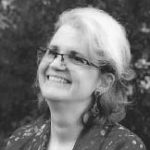 Jesse Devyn Crowe lives in the beautiful Pacific Northwest with her fisherman husband and two adventurous Labrador Retrievers. She is working on a novel series.
Jesse Devyn Crowe lives in the beautiful Pacific Northwest with her fisherman husband and two adventurous Labrador Retrievers. She is working on a novel series.
 Elaine Sorrentino is the Communications Director at South Shore Conservatory (SSC) in Hingham, MA, where she creates promotional and first person content for press and for a blog called SSC Musings. Her nonfiction piece, titled It’s All About Attitude, took grand prize in the Write a DearReader Contest at the reader advisory blog site, DearReader.com. Each Tuesday, Elaine posts a widely-followed Haiku Tuesday senryu poking fun at the world around her.
Elaine Sorrentino is the Communications Director at South Shore Conservatory (SSC) in Hingham, MA, where she creates promotional and first person content for press and for a blog called SSC Musings. Her nonfiction piece, titled It’s All About Attitude, took grand prize in the Write a DearReader Contest at the reader advisory blog site, DearReader.com. Each Tuesday, Elaine posts a widely-followed Haiku Tuesday senryu poking fun at the world around her.
Jocelyn Cullity
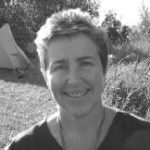
The Two-Body Problem
Jocelyn Cullity’s nonfiction work is found in journals that include The Writer’s Chronicle, Room of One’s Own, and Passionfruit: A Woman’s Travel Journal. Her documentary, Going to the Sea, aired on The Women’s Television Network. Her first novel, Amah and the Silkwinged Pigeons, will be published by the feminist press, Inanna, in 2017. She teaches in the BFA Program in Creative Writing at Truman State University—which is the home that she finds in her essay.
Ann Cwiklinski
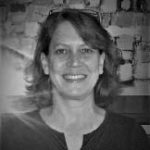
Household Gods
From about age eighteen to thirty-two, when I had my first child, I thought of “home” as a place to stow a few things while I was busy living life elsewhere—working, traveling, hanging out with friends. Only as a mother did I start to long for a safe, cheerful, soul-reposing home for my family and me. (Though I reference homeless Trojans from the Aeneid in my story, I’m certain V.S. Naipaul’s hilarious and heartbreaking Mr. Biswas was far more influential in sharpening my desire for a place I could call home.) So this story is about that longing, and about what we value at the center of our homes—our household gods. For my family, Mole and Rat from The Wind in the Willows, Freddy the Pig, and Winnie-the-Pooh loom large in the Pantheon.
Caroline Fenn

Stars and Awnings and Not from Here
I think it was in The Sisterhood of the Traveling Pants that, when I was younger, I read the line, “Home was a time and it had passed.” Ever since, I’ve been fascinated by the nebulousness of “home” and how it can be not just a place, but also a time, a person, a chair or a dog. These pieces explore the different ways home feels when it’s close and when it’s very far away.
Mary Hennessy

We thought delayed-gratification was a single word
Home has everything to do with the words spoken in it: today, yesterday, and tomorrow. How wonderful to make a journal focused on the idea of home and the use of words as the bricks for its construction.
Susan Kress
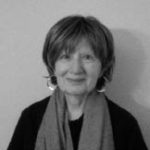
The Bride’s Dream
Susan Kress notes that we women, like tortoises, carry our houses on our backs, as shelter, as burden, and as target. Our houses mirror who we are and where we are in any psychological moment. Her book, Carolyn Heilbrun: Feminist in a Tenured Position, was reissued in paperback, with a new epilogue on Heilbrun’s suicide in 2006 (University of Virginia Press). She resides in Saratoga Springs, New York, after a long career teaching at Skidmore College. She has poems published or forthcoming in New Letters, Adanna, and 3Elements Review.
Karina Jiménez Lewis

Before I Forget
Karina Jiménez Lewis, a professional social worker, moved to the US from the Dominican Republic thirty years ago. She has devoted her career to human service policy reform on behalf of children and families. Her passion for humanity is further expressed by written word—through storytelling and exploring cultural and equity issues—to elevate women and other oppressed people. For her, the concept of “HOME” is fraught with contradictions: An ancestral land for which she longs, as well as a violent place she is happy to have left. HOME speaks to acclimating to a new country while shedding earlier versions of herself.
Sarah Marxer

Pepperweed
Even though I grew up as a city kid, paying close attention to the botanical life surrounding me—the cultivated and the weeds, the native and the imported—has been a reliable way for me to make home out of the places I’ve lived, as a girl, as a young woman, and as a mother. This essay explores the complexity of finding home amid the both-and-ness that exists in every life, every family, every place.
Pat McClelland

Inner City
Home for me and most kids I knew in post-World War II America was lived partly on the streets, especially in the summer. While grownups sat on stoops after dinner swapping stories of their day, kids played 1-2-3 Spud, hopscotch, jacks, and jumped rope until darkness gathered. This poem attempts to capture some of that long-ago mid-summer magic.
Allison Moorer

It’s Not the Devil, It’s Only Daddy
I am a second-year MFA candidate in nonfiction at The New School in New York City. I am working on a memoir of my childhood, tentatively titled Blood. My parents both died when I was fourteen. I’ve been trying to figure out my family since I was aware enough to know I had one.
Risa Nye
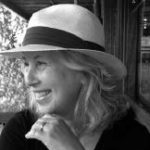
Defining Home
For nearly twenty-five years, I have been writing about what it means to recreate a home after a natural disaster strikes. After flood, fire, earthquake, tornado—or whatever Mother Nature dishes out—survivors like me are faced with the challenge of putting our lives back together while we figure out what makes the place where we live, however temporary, feel like a home.
Carol Park

Caged in Season
Carol Park’s poetry appears in the journals SLANT and Black Fox; her fiction in The East Bay Review, Inigo, and The Harpoon Review. She earned her MFA from Seattle Pacific University. Carol’s homes are far apart—from suburbs of San Francisco, to redwood wilderness, to cultural mazes of Japan. While teaching and befriending English learners from distant places, she’s learned how little she knows and how precious is the meeting of minds over tea. Home keeps changing—yet, the dissolution of remains saddens the soul. What happens to me-ness when estranged from what made the heart’s home?
MK Punky

The Homeless Metaphor
The author of many books, most recently the novel The Termite Squad, and the winner of the 2016 Barrelhouse Prize for fiction, MK Punky is the poet laureate of Vista Street Community Library in Los Angeles. “The Homeless Metaphor” is the opening piece of Report from the Street: Voices of the Homeless, the culmination of a year-long listening project.
Ginny Short

The Hawk and the House
The landscape of home is capricious, sometimes bright, sometimes murky. Home is where we started, where we are and where we will be. For me, home is the road I am always traveling. I write to create a hot air balloon to lift me to a place where I can see the landscape of road and home, to follow, to discover all of its contours, the heartbreakingly beautiful and the stunningly brutal. It’s all home.
Tara Stringfellow
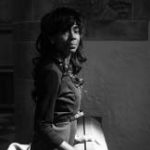
Mary and Only read from exodus
Tara Stringfellow is a poet and an attorney living in Chicago, originally from Memphis, Tennessee, and Okinawa, Japan. Third World Press published her first collection of poetry, titled More than Dancing, in 2008. Nominated for a Pushcart Prize in 2016 and a semi-finalist for the Fulbright Fellowship, her poems have appeared, or are forthcoming, in Jet Fuel Review, Women’s Arts Quarterly, Transition Magazine, Apogee Journal, Linden Avenue Literary Journal, Chicago Magazine, decomp, and Prompt. Currently, the author is an MFA Candidate for both poetry and prose at Northwestern University and is writing a memoir about her family she’s calling Memphis.
Emily Wall

Liveaboard, S/V Iona and Bringing Saki Home
Emily Wall is an Associate Professor of Creative Writing at the University of Alaska. She has been published in a number of literary journals in the US and Canada, most recently in Prairie Schooner and Alaska Quarterly Review. She has two books published with Salmon Poetry: Liveaboard And Freshly Rooted. Emily lives and writes in Douglas, Alaska. Her thoughts on her poems:
Liveaboard, S/V Iona
I lived on my 37’ sailboat for four years, and in some ways, it was more of a home than anywhere else I’ve lived. We lived in Vancouver, BC, and our dock was full of liveaboard boats. We colonized the dock with small gardens and turned it into our collective living room. Evenings we ate together, each bringing out something to share. All summer we’d cruise the coast and create ever-changing communities—one or two nights on a dock and we had a new neighborhood. Living like this made our home, which we took everywhere with us, more intensely home.
Bringing Saki Home
In her first few months of pregnancy, my sister lost her baby. In the weeks afterward, when we talked, she talked about how to “bring the baby home.” In the medical world, my niece, small as she was, was “medical waste.” Of course, we couldn’t allow that to be. So my sister brought her home and buried her in their backyard, then put a small statue of a lamb to mark her grave. When I first considered the theme of home, I immediately thought of Saki and how important it was for all of us, that we could bring her home.
